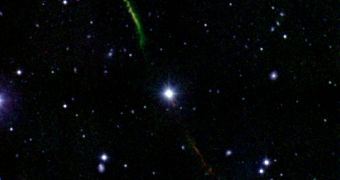That's like having an 80 year old woman giving birth to a baby. The natural process of planetary formation, as astronomical observations proved in multiple situations, usually takes place in the first 10 to 100 million years of the star's life. However, it seems that this is not always the case. Old stars, presenting a population of planets orbiting around them, could, in fact, trigger a second planet formation process late in their lives, argues a new study presented by the University of California, Los Angeles.
It seems rather unlikely that the old stars could form new planets around them, because the disks of matter spinning around them are believed to be too diffuse to pull together and form a planet. Astronomers argue that, more than 100 million years after the star is born, matter spinning around it is supposed to be blown towards the outer regions of the solar system, which would inhibit the star formation process.
The study made by graduate student Carl Melis shows that, even after billions of years after the first planets formed around older stars, a second wave of planetoids may appear. Two such old stars presenting these unique characteristics have already been discovered in the Pisces and Ursa Major constellations, and designated as BP Piscium and TYCHO 4144 329 2.
These two particular stars, especially BP Piscium, seem to have all the properties of young solar systems, such as high speed matter accretion rates and matter ejections, plus the distinctive signature of gas and dust clouds spinning around them, respectively high emissions of infrared light. However, a close examination reveals that this is hardly the case.
The stars burn molecular hydrogen gas to remain active, through a nuclear fusion reaction, turning it into helium. But a star would eventually deplete its hydrogen reserves over time, so, in order to keep itself alive, the star starts burning helium gas into even heavier elements.
Light spectroscopy of the surface of both stars reveals that they have a relatively low content in lithium metal. Usually, young stars process the hydrogen gas into large quantities of lithium. The lack of this element could only mean that the star is not as young as previously approximated, but is old enough to have processed the whole lithium quantity in heavier elements.
Furthermore, about 75 percent of the light emitted by the BP Piscium and 12 percent of the TYCHO 4144 329 2 is absorbed and re-emitted by the dust surrounding them in the form of infrared light, revealing massive amounts of matter around them.
TYCHO 4144 329 2 is part of a binary stellar system, meaning it is orbiting around another more massive star. Although it seems that the orbiting star, with a mass close to that of the Sun, presents an active planet formation process, the same cannot be said about its companion.

 14 DAY TRIAL //
14 DAY TRIAL //